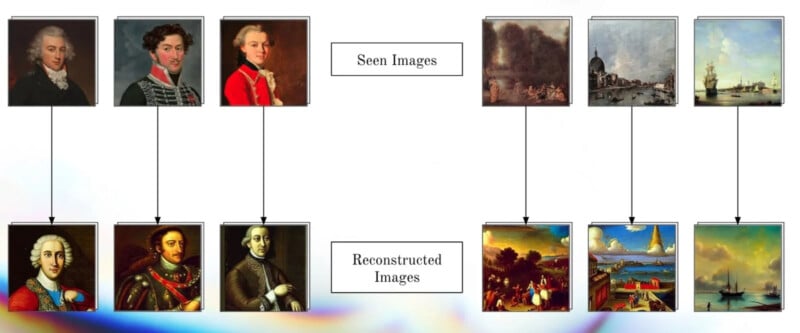
When I was a photojournalist, turning up for jobs and getting my camera out meant I then had to download the images to a computer, edit, send, et cetera. But what if there was a way to skip the camera part and take an image with my mind instead?
That’s one of the terrifying potential uses for a technology developed by a French art collective who have made a mind-to-image algorithm using functional Magnetic Resonance Imaging (fMRI) technology.
Artnet reports that the group called Obvious published a scientific paper in April in which they retrieved images from the mind’s eye of test subjects who were all artists.
Using Medarc’s MindEye fMRI-to-image model, the artists were placed in an fMRI machine and shown a series of images that were recreated with “near-perfect accuracy.”

“Every time the artist saw a portrait, the algorithms reconstructed a portrait, and likewise for landscapes,” the group tells Artnet.
However, these were artists the researchers were dealing with so they wanted to also generate images of what was going on in their imagination. The subjects were given specific instructions such as to make a “surrealist” portrait that represents “sadness” while in the fMRI machine. The researchers reported success with the AI spitting out the right type of image nine times out of 10.

In a further experiment, the artists recalled an existing image that they had seen previously with the results once again being close to the mark.

Obvious are more interested in what this technology means to the surrealism art movement telling Artnet that the project “paves a way for artists to ultimately picture directly what they have in their mind, and to share it with art enthusiasts.”
However, the French artists acknowledge that mind-to-image programs have all manner of potential dystopian misuse.
“What does it mean for the sanctity of personal thoughts if they can be visualized and shared?” Obvious write. “As we venture into this new era of technological capability, we must navigate these complex issues, ensuring that innovation is balanced with ethical considerations and respect for individual autonomy.”
![]()
Obvious hit the headlines in 2018 when they sold the world’s first AI-generated portrait for a staggering $432,000.
You can read the full mind-to-image paper here.
Image credits: Obvious


